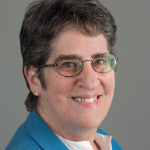 Peer-reviewed medical journals invite experts to provide commentaries on new research. These experts receive professional exposure and can build and expand their professional connections with editors. Unfortunately, women have lower odds of authoring invited commentaries than their male peers, according to recent research.
Peer-reviewed medical journals invite experts to provide commentaries on new research. These experts receive professional exposure and can build and expand their professional connections with editors. Unfortunately, women have lower odds of authoring invited commentaries than their male peers, according to recent research.
A case-control study by Emma G. Thomas, MSc, MA, a graduate student in biostatistics at Harvard University, Cambridge, Mass., and colleagues found the disparity between women and men was even greater for senior researchers. The authors published their findings online Oct. 23, 2019, in JAMA Open Network.1 The analysis focused on intra-citing commentary articles, which they defined as publications that cite one or more other publications in the same journal volume and issue. The investigators identified 43,235 invited commentaries published in 2,459 journals from Jan. 1, 2013, through Dec. 31, 2017. They analyzed data from 34,047 unique intra-citing commentary authors, among whom 26.6% were women.
The researchers controlled for field of expertise by matching published abstracts on the basis of calculations of a similarity index for abstracts. They used flexible non-linear methods to control for years of active publication and publication metrics and used genderize.io, an application designed to predict the gender of a person based on their name, to infer the corresponding author’s gender from first name and country of origin. The authors noted that although their statistical analysis did not account for correlation due to repeated observations from the same author journal, their sensitivity analyses indicated this phenomenon had only a minimal effect on results.
The investigators found only 23% of invited commentaries had women as corresponding authors. They then looked more specifically at women and men who had similar fields of expertise and publication metrics and had been publishing for a median of 19 years.
“In this matched case-control study, we estimated the odds ratio of authoring an invited commentary in a medical journal for women compared with men who had similar scientific expertise, seniority and publication metrics,” write the authors. “We observed a statistically significant association in the odds for female researchers, which were approximately 21% lower than for their male peers. This result challenges the common assumption that gender disparities in invited article authorship can be explained by greater publication success, seniority or self-selection into competitive fields among male scientists.”
The authors proposed that the gender bias in commentary invitations from publishing gatekeepers becomes more pronounced with author seniority, because commentary authors, who tend to be men, are more likely to be solicited for future articles. They documented this effect with the fact that, for every decile increase in years active, the odds ratio for female invited commentary authorship decreased by a factor of 0.97 relative to male invited commentary authorship.
The researcher suggested journal editors use natural language processing for published research to both widen and diversify the pool of experts considered for commentary invitations. They wire that such an approach would allow editors to identify highly qualified author candidates who may otherwise be overlooked.
Lara C. Pullen, PhD, is a medical writer based in the Chicago area.
Reference
- Thomas EG, Jayabalasingham B, Collins T, et al. Gender disparities in invited commentary authorship in 2459 medical journals. JAMA Netw Open. 2019 Oct 2;2(10):e1913682.

